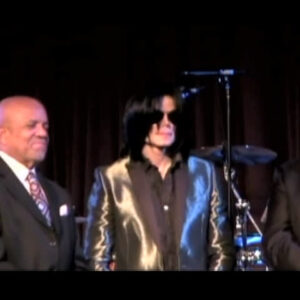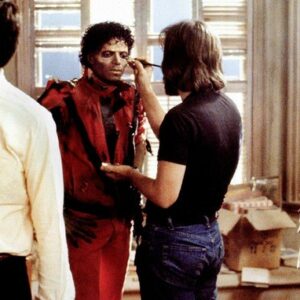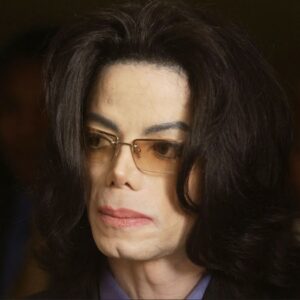By the early 2000s, Cillian Murphy was a name recognized by indie film lovers for his intense performances in low-budget, often character-driven movies. However, it wasn’t until he stepped into the shoes of Dr. Jonathan Crane, better known as Scarecrow, in Christopher Nolan’s Batman Begins (2005) that the Irish actor found himself thrust into the Hollywood limelight. This role not only marked his debut in the superhero genre but also set the stage for what would become a fruitful collaboration with one of the most revered filmmakers of our time.
Murphy’s journey into blockbuster fame was far from the typical Hollywood trajectory. He wasn’t an overnight sensation, nor was he cast for his looks or brawn, but instead for his unnerving intensity and the psychological depth he could bring to his characters. Batman Begins was a game changer, catapulting Murphy from relative indie obscurity to international recognition, and carving a path that allowed him to seamlessly transition between large-scale blockbusters and the intimate, more artistic films that first showcased his talent. In this article, we take a closer look at the pivotal role of Dr. Jonathan Crane/Scarecrow, its impact on Murphy’s career, and how it served as the springboard for one of the most fascinating trajectories in modern cinema.
The Role of Dr. Jonathan Crane/Scarecrow: Duality and Depth
Cillian Murphy’s portrayal of Dr. Jonathan Crane, a seemingly mild-mannered psychiatrist who moonlights as the fear-inducing villain Scarecrow, was a revelation. Nolan’s reboot of the Batman franchise was grounded in realism, and Murphy’s performance struck a delicate balance between psychological nuance and terror. The character itself was unique—a villain without the superhuman abilities or grotesque physicality typically seen in superhero antagonists. Instead, Scarecrow wielded fear as his weapon, making him an eerily relatable adversary.
Murphy’s dual portrayal of Dr. Crane and his menacing alter-ego Scarecrow is a masterclass in controlled menace. As Dr. Crane, he comes across as cold, clinical, and detached, with an almost academic interest in the power of fear. As Scarecrow, however, Murphy allows his performance to unravel, injecting chaos and madness into the character. His Scarecrow wasn’t about brute strength; he was about psychological manipulation, exploiting the vulnerabilities of Gotham’s citizens and their deep-seated fears.
What made Murphy’s performance stand out was the subtlety he brought to the role. He wasn’t a larger-than-life villain—he didn’t need to be. The fear toxin he deployed on his victims was the real weapon, and Murphy’s calm demeanor, juxtaposed with the horrifying effects of the toxin, created a chilling dynamic that elevated his character from mere comic book villain to something far more terrifyingly real.
A Career Boost in Hollywood: From Indie Star to Blockbuster Mainstay
Before Batman Begins, Murphy was predominantly known for his roles in independent films, particularly in his native Ireland and the UK. His breakthrough came with 28 Days Later (2002), Danny Boyle’s post-apocalyptic horror, where Murphy’s portrayal of a survivor in a desolate London drew attention for its intensity and emotional range. However, despite critical acclaim, he remained largely confined to the indie circuit.
Enter Batman Begins, and everything changed. The film’s immense success brought Murphy to a global audience, and Hollywood took notice. Nolan’s casting of Murphy wasn’t a typical choice—Murphy wasn’t a household name, nor was he a physically imposing figure. But what Murphy brought to the table was his ability to convey the psychological complexity of a character, a trait that Nolan clearly valued.
The role of Scarecrow opened doors for Murphy in the mainstream film industry. It showcased his ability to hold his own in a big-budget blockbuster, while still maintaining the nuanced performance style that had earned him praise in smaller films. Following Batman Begins, Murphy continued to work with Nolan on some of the director’s most iconic projects, including Inception (2010) and Dunkirk (2017). These collaborations solidified Murphy’s place in Hollywood and marked him as one of the few actors capable of seamlessly transitioning between indie and blockbuster films.
Working with Christopher Nolan: A Partnership Rooted in Trust
Cillian Murphy’s collaboration with Christopher Nolan is one of the most notable director-actor partnerships in contemporary cinema. After their initial work together in Batman Begins, the duo reunited for The Dark Knight (2008) and The Dark Knight Rises (2012), where Murphy reprised his role as Scarecrow in cameo appearances that added a sense of continuity and depth to the trilogy.
But it was Murphy’s involvement in Inception and Dunkirk that truly exemplified the trust Nolan placed in him. In Inception, Murphy played Robert Fischer, the heir to a massive energy corporation, whose psyche becomes the battleground for Leonardo DiCaprio’s character. Though the film boasted an ensemble cast filled with A-list stars, Murphy’s portrayal of the conflicted and emotionally scarred Fischer stood out, adding a layer of vulnerability to the cerebral sci-fi thriller.
In Dunkirk, Murphy took on the role of a shell-shocked soldier, a character whose trauma and desperation provided a human face to the horrors of war. The role was small but pivotal, and Murphy’s performance, restrained yet deeply affecting, was a testament to his ability to convey complex emotions with minimal dialogue. Nolan’s continued collaboration with Murphy speaks volumes about the director’s confidence in the actor’s talent and versatility.
Versatility Beyond Genre: Avoiding Typecasting
One of the most impressive aspects of Cillian Murphy’s career post-Batman Begins is how successfully he has avoided being typecast. While it would have been easy for him to become pigeonholed as a villain, Murphy instead took on a wide variety of roles across different genres, further showcasing his versatility as an actor.
In Red Eye (2005), he played a charming but sinister terrorist opposite Rachel McAdams in a psychological thriller that highlighted his ability to play both the hero and the villain in the same breath. In Ken Loach’s The Wind That Shakes the Barley (2006), Murphy delivered a poignant performance as a soldier in the Irish War of Independence, earning critical acclaim and solidifying his reputation as one of Ireland’s finest actors.
Murphy’s ability to oscillate between large-scale blockbusters and intimate indie films is rare in Hollywood, where many actors find themselves locked into a specific type of role. His post-Batman Begins filmography is a testament to his refusal to be boxed in. From the dystopian thriller Sunshine (2007) to the heart-wrenching drama Peaky Blinders (2013-2022), where he played the iconic role of Thomas Shelby, a complex anti-hero, Murphy has consistently chosen roles that challenge him as an actor, rather than conforming to industry expectations.
The Legacy of Dr. Jonathan Crane/Scarecrow: A Lasting Impact
Cillian Murphy’s portrayal of Scarecrow in the Dark Knight trilogy remains one of the most memorable villain performances in modern cinema. Though his role in the later films was more limited, the character’s presence throughout the trilogy added a sense of continuity that tied the films together in a way few superhero franchises have managed.
The decision to bring Scarecrow back in The Dark Knight and The Dark Knight Rises was a nod to the character’s enduring appeal and Murphy’s chilling portrayal. Unlike many superhero villains who are defeated and forgotten after one film, Scarecrow lingered in the background, always a reminder of the fear and chaos lurking beneath Gotham’s surface.
Murphy’s Scarecrow may not have been the primary antagonist in The Dark Knight or The Dark Knight Rises, but his presence in both films served as a reminder of Nolan’s commitment to creating a cohesive, interconnected world where characters evolve and recur in meaningful ways.
Conclusion: A Career Defined by Risk and Reward
Cillian Murphy’s role as Dr. Jonathan Crane/Scarecrow was more than just a turning point in his career—it was the beginning of a new chapter. The success of Batman Begins opened doors for him in Hollywood, but it was his talent, versatility, and willingness to take risks that allowed him to thrive in both mainstream and indie films. His collaborations with Christopher Nolan have been some of the highlights of modern cinema, and his ability to avoid typecasting has made him one of the most respected and sought-after actors of his generation.
In a film industry that often values physicality over psychological complexity, Murphy’s rise to fame is a testament to the power of subtle, nuanced performances. His Scarecrow remains an iconic character, but more importantly, his career serves as a model for actors seeking to balance artistic integrity with mainstream success.





